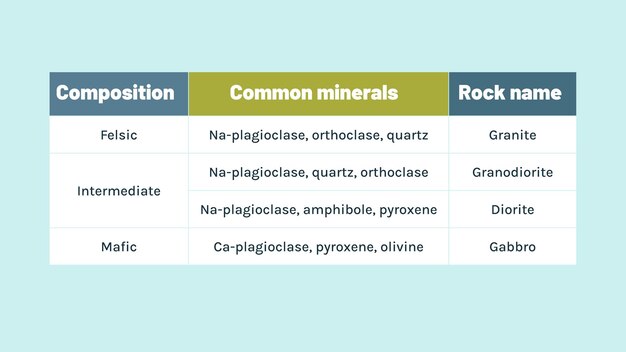REIT Valuation: Mastering FFO & AFFO for Accurate Analysis

REIT Valuation Metrics, particularly Funds From Operations (FFO) and Adjusted Funds From Operations (AFFO), are crucial for accurately assessing the financial health and performance of Real Estate Investment Trusts, offering a more precise view than traditional net income measures.
Understanding REIT Valuation Metrics: A Deep Dive into Using Funds From Operations (FFO) and Adjusted Funds From Operations (AFFO) for Accurate Analysis is crucial for investors looking to make informed decisions in the real estate market. By focusing on Funds From Operations (FFO) and Adjusted Funds From Operations (AFFO), you can gain a clearer picture of a REIT’s profitability and financial stability compared to traditional accounting metrics.
Understanding real estate investment trusts (REITs)
Real Estate Investment Trusts, or REITs, are companies that own or finance income-producing real estate across a range of property sectors. These sectors include offices, apartments, warehouses, hospitals, retail centers, hotels, and infrastructure. A key feature of REITs is their structure, which allows them to distribute the majority of their income directly to shareholders without being taxed at the corporate level, provided they meet certain criteria.
This unique tax advantage is a major draw for investors. But to fully appreciate a REIT’s financial health, we need to see beyond traditional measures like net income.
The role of REITs in investment portfolios
REITs offer diversification and potential income. They don’t always move in lockstep with stocks and bonds, offering a hedge against broader market volatility.
- Diversification: REITs provide access to the real estate market, which can behave differently from stocks and bonds.
- Income generation: REITs are structured to distribute a significant portion of their taxable income to shareholders, resulting in consistent dividend payouts.
- Inflation hedge: Real estate values and rents tend to increase during inflationary periods, making REITs a potential hedge against inflation.
REITs offer a unique way to invest in real estate without directly owning properties, which can be illiquid and difficult to manage.
By understanding their structure and financial metrics, investors can better assess a REIT’s potential for generating income and long-term growth.
In conclusion, REITs present a distinct investment opportunity, offering diversification, income potential, and a hedge against inflation. Evaluating REITs requires specialized metrics like FFO and AFFO, which provide a clearer picture of their financial performance.
The limitations of traditional metrics in REIT valuation
While metrics like net income are standard for evaluating companies, they often obscure the true financial performance of REITs. The real estate industry’s quirks, like depreciation, can make net income misleading for REITs. Understanding these limitations is vital for accurately assessing a REIT’s value.
Traditional metrics may not accurately reflect a REIT’s cash-generating ability or its true operational performance.
Depreciation and its impact on net income
Depreciation is an accounting method used to allocate the cost of an asset over its useful life. For REITs, depreciation can significantly reduce net income without impacting cash flow. This is because depreciation is a non-cash expense; it reflects the wear and tear of a property but doesn’t involve an actual outflow of cash.

While properties may appreciate in value over time, accounting rules require REITs to depreciate them, leading to an understatement of true performance when using GAAP standards.
- Non-cash expense: Depreciation lowers taxable income without affecting cash reserves, potentially misrepresenting a REIT’s ability to pay dividends.
- Impact on earnings: High depreciation expenses can significantly lower reported earnings, deterring investors who rely solely on these figures.
- Regulatory requirements: Accounting standards mandate depreciation, but it doesn’t reflect physical deterioration, particularly with well-maintained properties.
Depreciation, while important for accounting purposes, does not provide an accurate representation of a REIT’s cash-generating ability or its true operational performance.”
In conclusion, traditional metrics like net income can be misleading when evaluating REITs due to the impact of depreciation and other real estate-specific factors. Metrics like FFO and AFFO offer a more accurate picture of financial performance.
Funds from operations (FFO): A closer look
Funds From Operations (FFO) is a financial measure specifically designed for REITs to provide a clearer view of their operating performance. It adjusts net income to exclude items like depreciation and gains or losses from property sales, offering a more accurate reflection of a REIT’s cash-generating ability. The formula for FFO typically starts with net income, adds back depreciation and amortization, and subtracts any gains from property sales while adding back any losses.
FFO provides a more realistic view of a REIT’s cash flow and is essential for assessing its ability to pay dividends.
Calculating funds from operations
FFO is calculated by starting with net income, adding back depreciation and amortization, and then adjusting for gains and losses from the sales of property. The resulting figure represents the cash flow available to the REIT from its operations, without the distortions caused by accounting conventions like depreciation.
- Starting point: Net income from the REIT’s income statement.
- Adjustments: Add back depreciation, amortization, and deduct gains or losses from sales.
- Result: FFO represents the cash flow available to the REIT from operations.
Calculating FFO involves a few key steps to adjust net income for non-cash items and gains or losses from property sales.
In conclusion, Funds From Operations (FFO) is a critical metric for evaluating REITs, offering a more accurate view of their operating performance and cash-generating ability than traditional metrics like net income. Understanding how to calculate and interpret FFO is essential for making informed investment decisions in the REIT sector.
Adjusted Funds From Operations (AFFO): Refining the valuation
While FFO is a significant improvement over net income for evaluating REITs, it still has limitations. Adjusted Funds From Operations (AFFO) takes the concept a step further by accounting for additional factors that affect a REIT’s cash flow. AFFO is sometimes also referred to as Funds Available for Distribution (FAD). It refines FFO by subtracting recurring capital expenditures necessary to maintain the REIT’s properties and often includes adjustments for items like straight-line rents and non-cash rent.
AFFO adjusts for capital expenditures and other non-cash items, a more comprehensive view of a REIT’s cash flow.

Key differences between FFO and AFFO
AFFO builds upon FFO by accounting for additional factors that impact a REIT’s cash flow, providing a more detailed assessment of its operational and financial performance. The primary distinction lies in the treatment of capital expenditures and certain non-cash items.
Here’s how AFFO builds upon FFO to provide an even more refined valuation metric:
- Capital expenditures: AFFO deducts recurring capital expenditures needed to maintain the REIT’s properties.
- Non-cash items: AFFO looks at items such as straight-line rent and non-cash rent.
In summary, while FFO offers a better view of a REIT’s performance than net income, AFFO takes it a step further. It adjusts for capital expenditures and other non-cash items to provide a deeper insight into a REIT’s financial performance.
Practical application of FFO and AFFO in REIT analysis
FFO and AFFO are not just theoretical metrics; they are practical tools used by analysts and investors to make informed decisions about REITs. These metrics help in assessing a REIT’s dividend-paying ability, comparing REITs within the same sector, and determining whether a REIT is overvalued or undervalued. By understanding how to apply FFO and AFFO, investors can gain a competitive edge in the REIT market.
To effectively apply FFO and AFFO in REIT analysis, consider the dividend payout ratio, comparative analysis, and valuation assessment.
Using FFO and AFFO to assess dividend sustainability
One of the primary uses of FFO and AFFO is to assess the sustainability of a REIT’s dividend. Since REITs are required to distribute a significant portion of their income to shareholders, it’s crucial to determine whether the REIT can consistently generate enough cash flow to cover its dividend payments.
Here are several useful tips to utilize FFO and AFFO
- Dividend payout ratio: Calculate the dividend payout ratio by dividing the annual dividend per share by the FFO or AFFO per share.
- Sustainability check: A payout ratio below 100% indicates that the REIT is generating enough cash flow to cover its dividend payments.
- Conservative approach: Investors often prefer to use AFFO for this calculation, as it provides a more conservative view of the REIT’s cash flow.
In conclusion, FFO and AFFO are essential tools for assessing dividend sustainability, enabling investors to make informed decisions about the reliability and attractiveness of REIT dividend payouts.
Case studies: FFO and AFFO in action
Examining real-world cases of REITs helps illustrate the value of FFO, AFFO, how they operate and make investment decisions. Consider a REIT that seems undervalued based on traditional metrics but shows a different financial story. A look at FFO and AFFO will provide the deeper insight that investors need.
Case studies demonstrate the practical application of FFO and AFFO in evaluating REITs and making investment decisions.
Analyzing a REIT with high capital expenditures
Consider a hypothetical REIT, “Property Maintenance REIT” (PMR), which owns a portfolio of older commercial properties. While PMR’s net income appears healthy, it has significant capital expenditures each year to maintain and upgrade its properties. Let’s look at how FFO and AFFO provide insights. PMR’s FFO is $2.00 per share, indicating a strong operational cash flow. However, after deducting recurring capital expenditures, the AFFO is $1.50 per share.
- Based on net income, PMR might appear attractive.
- FFO shows more robust cash flows.
- AFFO reveals the impact of capital expenditures.
In summary, analyzing REITs using FFO and AFFO provides critical insight into financial health and the ability to sustain dividends, helping investors to make informed and profitable decisions.
| Key Metric | Brief Description |
|---|---|
| 🏢 FFO | Net income adjusted to exclude depreciation and gains/losses from property sales. |
| 💰 AFFO | FFO adjusted for recurring capital expenditures necessary to maintain REIT’s properties. |
| 📈 Dividend Sustainability | Assessing whether a REIT can cover its dividend payments using FFO and AFFO. |
FAQ
▼
FFO excludes depreciation and amortization, focusing on a REIT’s operating performance. Net income includes these non-cash expenses, which can distort a REIT’s true earnings.
▼
AFFO deducts recurring capital expenditures, providing a more realistic view of the cash available for distribution. It’s more conservative than FFO, which doesn’t subtract these essential recurring costs.
▼
Depreciation reduces net income but doesn’t impact cash flow. Traditional valuation metrics relying on net income can misrepresent a REIT’s financial health, highlighting the importance of FFO and AFFO.
▼
A FFO payout ratio below 100% suggests the REIT can cover its dividend payments, which indicates financial sustainability. Lower is better, pointing to more capacity to cover the dividend.
▼
Yes, but consider the specific nature of the REIT. For example, capital expenditures can differ significantly between property types, affecting AFFO’s relevance. Consider these differences when using the metrics.
Conclusion
In conclusion, mastering REIT Valuation Metrics: A Deep Dive into Using Funds From Operations (FFO) and Adjusted Funds From Operations (AFFO) for Accurate Analysis is critical for anyone looking to invest in real estate investment trusts. By understanding and utilizing metrics like FFO and AFFO, investors can gain a more accurate and comprehensive view of a REIT’s financial health and operational performance, leading to more informed and profitable investment decisions.





